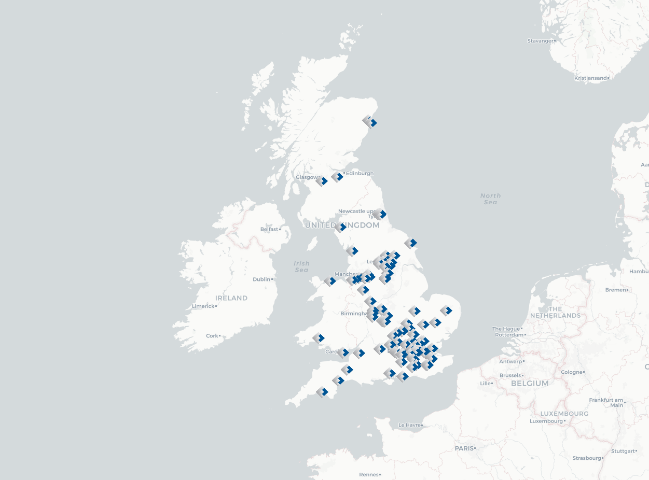
January 28, 2020
To begin, full disclosure for the reader that the author joined the real estate industry at roughly the beginning of the current Premier League season from a country that refers to the sport as soccer. So, caveat emptor, and all that. It would be best to consider this an attempt at first blush impressions of this fascinating industry and well-worn experience from others (namely, banking and M&A).
It is no secret that the UK property industry is confronting significant challenges and opportunities right now. Firms are beginning to invest in earnest in new technology to help scale their businesses and the explosion of “proptech” start-ups has been the result. By and large, the pursuit of efficiency has been behind this renewed focus on leveraging technology. Although a broad topic, I’d like to focus on three key themes that I consider the most important for transformation. These themes can be addressed independently but are more powerful when considered collectively.
TLDR; these themes are:
1) Understanding Data Access and Availability;
2) Embracing Predictive Tools and;
3) Developing a Data-Driven Culture.
Understanding Data Access and Availability
Data is unquestionably changing the nature of every industry and business. Digitisation has made previously unwieldy datasets accessible and easy to explore, creating an abundance and availability of data from an ever-expanding set of sources such as building sensors, websites, and mobile apps. This explosion of data has been a boon for new ways to analyse and understand our world but comes with the challenge of managing it all. As anyone who has spent 45 minutes looking for something to watch on Netflix can attest, too much of a good thing can be paralysing.
The key to managing these new and exciting uses for data is, in my mind, two-fold. On the one hand, businesses should remain steadfastly focused on their core processes and, on the other, embrace a more open approach to collaboration and data sharing across the business (and increasingly, across the industry). Data – or more correctly, the analysis of that data – is simply one tool in the decision-making process, not the whole of it. So, aim to make the use cases business-first to avoid “analysis overload”.
Fiera Real Estate UK Properties:

Embracing Predictive Tools
Understanding where and why to leverage data leads directly into a conversation about the most powerful applications of it. Massive datasets are now paired with cheap computing power to create prediction algorithms that are reshaping almost every aspect of our lives. Most of us experience this daily listening to Spotify or browsing YouTube, but prediction has also massively changed shipping, retail, transportation, healthcare, and just about any industry you can imagine. In the residential space online companies have been using predicted home prices to help homebuyers for years. This revolution in prediction is steadily coming for the commercial real estate industry, too.
Eventually, the obstacles that commercial real estate present for prediction models (e.g., opaque data, highly bespoke transaction processes, etc.) will diminish and the models will change a great deal of today’s processes and strategies. However, to my mind the real winners will be those that unlock the interplay between humans and machines. Contrary to what some AI evangelists proclaim the machines are not all-knowing. Replacing decades worth of experience, deep relationships, and specific areas of expertise will not be possible given the nature of the business. Nor should it! The key to successfully adopting prediction models and automation will be to pick out the portions of processes that are well suited to be solved by computers – and leave the bits that are better done by humans to the, well, actual humans. We can highlight which of a basket of incoming deals would be a good fit, but we still need experienced professionals to have the knowledge and relationships to close that deal. Alexa may recommend a good restaurant nearby, but we’re not yet ready to trust her with a multi-million-pound real estate transaction.
Developing a Data-Driven Culture
But how to make this important transformation as a company and as individuals? There has been much ink (and money) spilled pushing companies to “think like a start-up”. I come not to bury this ethos, but not to praise it, either. A ping-pong table does not an entrepreneur make, and we would be well served to look for those enterprising and clever folks already in the office. Even better, we should acknowledge that everyone in our value chain has enterprising and clever ideas – transformation will come when we cultivate the space and behaviours to surface them. In short, start-ups do not have a monopoly on ingenuity or inclusiveness, and the solution to technology challenges will be cultural growth and not, as many would tell us, revolution.
There is much work to do – and even more to stop doing. However, the answers to our technology challenges are largely already in the building – if we continue to adapt the way that we think about our processes, decision-making, clients, and values. There is much to be learned from the habits and practices of coders and data-scientists, but my expectation is that the industry’s future winners will be those who embrace a human-oriented, design-first, and business-focused approach to technology.
Written by David Bender, Associate Director – Digital.
Read more on understanding data access and availability: Getting Ahead of the Market: How big data is transforming real estate (McKinsey – October 2018)
Read more on embracing predictive tools: The Prediction Machines (Agrawal, Gans, & Goldfarb – April 2018)
Read more on developing a data-driven culture: What is Design Thinking? (IDEO) | This is Service Design Thinking (Stickdorn/Schneider)